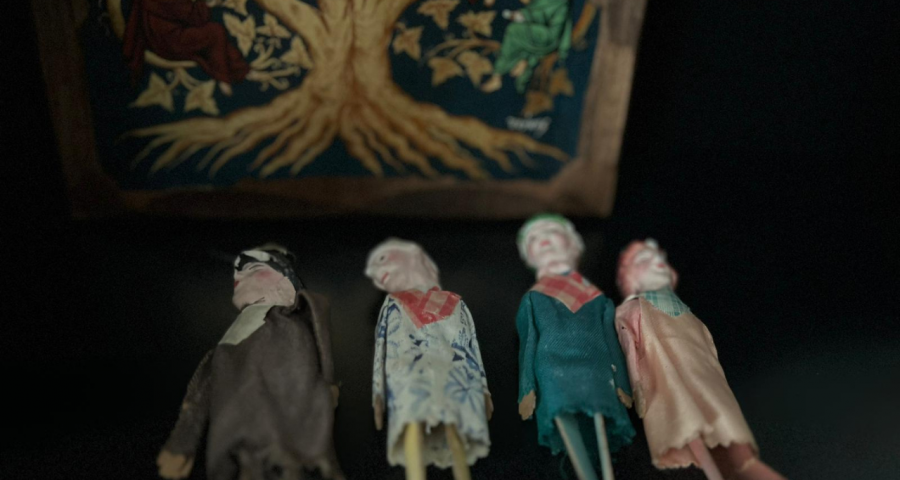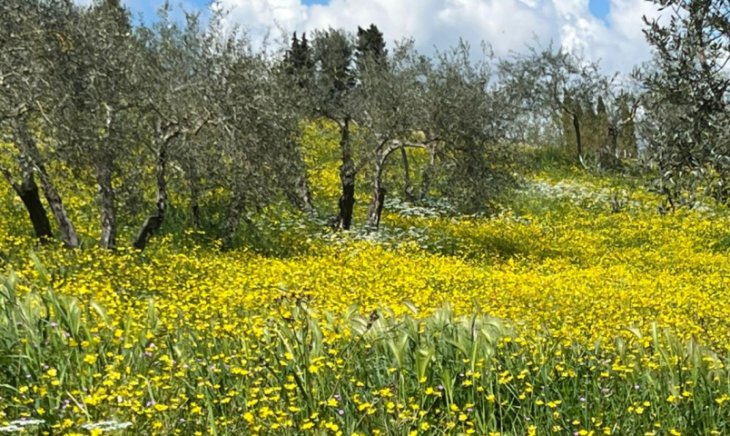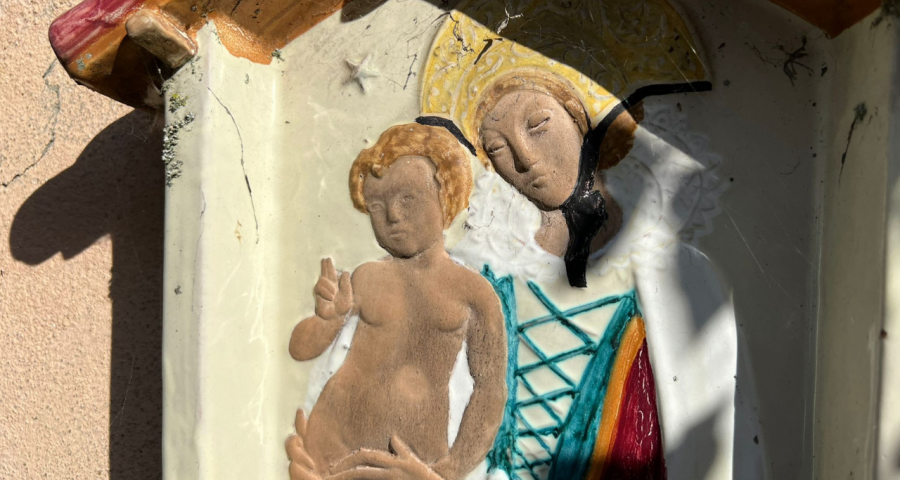CounterEconomy/6 - Despite all the errors, faithfulness to the Resurrection can and knows how to resist among us
By Luigino Bruni
Published in Avvenire 09/04/2023
"Piety is to religion what poetry is to literature: it is its highest peak ... with one difference, however, because while few are poets, everyone can be pious."
Giuseppe de Luca, Introduction to the history of piety (Introduzione alla storia della pietà)
The age of the Counter-Reformation is also an important time because with it liturgy became a "spectacle" distant from the people and this would greatly influence Latin economic culture.
The Resurrection is the centre of Christian faith. However, it has not always been the centre of popular Catholic piety. The history of Christianity has known many "eclipses of the Resurrection". A particularly long and decisive one took place during the age of the Counter-Reformation. The premise was that the Middle Ages had created its form of civilization by distinguishing monastic life from civil life. The common imagery of the Middle Ages as entirely Christian speaks the truth only when looking at the monasteries and the abbeys and those parts of the world that the monks and nuns managed to influence. Christian culture was essentially a monastic affair and belonged to the urban elites. However, most of the people who lived in small towns, in the countryside and in the mountains knew very little of the Christian faith, and their religious practices were substantially the "pagan" ones - Latin, Celtic, Saxon, Piceno... with some Christian influences, often limited to new names for ancient rites, spirits and deities. From this point of view, Christianity was not the mass culture of the Middle Ages.
With the Reformation, the medieval distinction between the monastery and the people disappeared. After Luther, Protestant regions began to shut down the monasteries and tried to turn them into cities. Ora et labora emerged from the abbeys and became the ethical law of the entire Protestant civilization in a secular liturgy. The monks of yesterday became the "workers" of the new day and work (labora) incorporated prayer (ora) within it. That medieval dichotomy was overcome even in the Catholic world. With the Counter-Reformation, the people experienced a new and unprecedented religious protagonism. However, here religion ended up occupying work: the "monks" of yesterday became the new devotees and piety invaded work. Thus, while Northern Europe began to invent capitalism, in the Catholic South work, the great medieval legacy of artisans and merchants, was instead absorbed by a devotion that progressively filled people’s entire life. The creation of a "Europe of the devout" (Louis Châtellier) was an intentional religious and social project of the Council of Trent, a very ambitious plan. The bishops and the Pope became aware of the essentially pagan state of a large part of the "Christian" population. Thus began a new popular action in Europe, and soon in the other continents as well. An enormous and impressive project: the great diffusion of Catholicism in the modern world is the result of the counter-reformist popular refoundation.
The first and fundamental strategy of the project of the Council of Trent was to "baptize" the mestizo religiosity of the countryside and of the people. In the Baroque period, the Catholic Church did something similar to what the Christians did with respect to the Greco-Roman world in the first centuries, taking much of the existing religious practices and building the new religion upon them. Similarly, the new orders, bishops and parish priests trained in these seminaries resemanticized all the sacred material that they found. Thus, the Baroque culture was born. Centuries of an explosion of sacred images, of newsstands at crossroads, of patron saints in every village and of patron saints of every area and moment of life. And thanks to the new, finally popular cult, Christian culture was born - every mass culture is born from a cult, including the capitalist cult. Religion proceeded to cover all the spaces and all the moments of life, liturgy was no longer a prerogative of the monks alone but became people’s very life. Space and time were in fact marked and taught as sacred space and time. Places (urban and rural) were marked by an infinity of symbols and family time became a simplified form of the "liturgy of the hours". Sacred time pierced the human horizon encroaching on the cult of Purgatory and its "souls", who now became highly present inhabitants of the new world.
Everything changed. With Humanism (at least after Giotto) churches were also decorated with earthly scenes, with images of city women and men next to Christ and the saints. With Baroque art, however, the themes represented became increasingly celestial (Mary glorified), and the churches were flooded with myriads of angels. The Promised Land became the afterlife, angels become the ideal of man: «And now take a look at those who find themselves on the ladder: they are men with the hearts of Angels, or Angels with the bodies of men» (Francis de Sales, Introduction to the devout life). In a homily on Easter day at the end of the seventeenth century, the great Jesuit preacher Paolo Segneri, famous for his dialogues with skulls, proclaimed the following: «Let this miserable body suffer, macerate itself, mortify itself, and with even more horrible limbs destroy itself; how lucky it is! Wheat must flourish, nor could it flourish again if it did not wither" (Lenten holidays of Father Paolo Segneri, 1835, p. 233) - and this was the Easter sermon: I leave it to the reader to imagine the one read on Good Friday!
This long dark night of humanity and the body naturally resulted in an explosion of the exaltation of death, of thousand brotherhoods, of suffrage companies and of the veneration of relics. Some of these practices were already present during the Middle Ages, but now they were no longer a matter of the urban or noble elites: true popular piety had been born. The only life that mattered was the future one. The cult of the dead became more important than the cult of the living. Luther's well-known phrase on Roman Christianity - «a religion of the living at the service of the dead» - truly became a reality during Baroque civilization. It was the eclipse of the Resurrection on this earth. Christian life was predominantly built around pain, interpreted and theorized as the «currency most pleasing to God». A form of "Catholicism of Good Friday" was born, sometimes taking place on Saturday, but never arriving to Sunday, and a Christianity without Sunday easily becomes inhuman, where God is no longer the biblical God who liberates men but their consumer, like an idol. No religion can be a friend of God if in order to raise God it needs to lower man, if to increase love for God it demands an increase in human pain.
Hence, it is not surprising that between the sixteenth and seventeenth centuries the Ways of the Cross developed in the Catholic world, and with them a whole proliferation of images, paintings, holy cards, folders, chapels and holy mountains. The vital and spiritual energy of the people was thus oriented towards non-generative devotional practices, in some ways harmless, but in others dissipative and toxic, which did not end up helping either religion or society, moving away from the good news of the agape of the Nazarene.
Moreover, here we find another fact that appears rather paradoxical with interesting consequences for the economy. While the spiritual life of individuals became increasingly centred on penance, on the culture of guilt, on the pain necessary to deserve purgatory... the collective liturgies instead became more and more emotional. Perhaps as an unconscious form of compensation, when those penitent, mortified and oppressed by cilices, ropes and the terror of death as they were, arrived at the church or took part in a procession, all their senses were solicited and satisfied: the sense of smell (incense), touch (the statues to be touched), hearing (music and songs), sight (paintings, relics, shows or spectacles) and taste (the Communion bread). Processions (Corpus Domini), pilgrimages, masses, the Via Crucis were sensory explosions in a world dominated by pain and skulls. In Good Friday theology and churches, the liturgies were pleasurable bodily experiences. The body so despised and devalued by theology and in confessionals, was caressed by the liturgy. The flesh chastised in private consoled itself (a little) in public.
Nevertheless, it is precisely here that a delicate but necessary topic insinuates itself. The liturgy, especially Mass, increasingly took on the form of a spectacle for the lay faithful, where the priest, sacramentally and spatially separated from the people, "produced" a good (the Eucharist) which the Christians "consumed" without participating in the its production and without having to actively co-generate it. The faithful became consumers of the liturgical good, because this was the concrete experience that people had. Unlike the Protestant world, where the Holy Supper is generated by the community (not by the minister), over time the Eucharistic liturgy of the Counter-Reformation created (one factor among many) a culture of consumption, which from religion naturally extended to both economic and civil life. Thus, citizens tend to expect "bread" from above without feeling the need to co-generate it (one only need to think of our culture of taxes or welfare). Thereby, strengthening our Italian tendency to compete with others through consumer goods, therefore generating a positional, rival and envious culture, which is the socio-economic disease of our country to this day.
Therefore, we were not very surprised when we made an empirical study together with some colleagues (A. Smerilli, V. Pelligra and P. Santori) on how Protestant countries and Catholic countries reacted during lockdown to the liturgies that were made available online (The gnostic pandemic, 2022). The data revealed a Catholic world less concerned than the Protestant one about abandoning Mass in person. Perhaps, the legacy of centuries of "show masses" lived as experiences of consumption are still active in our religious and social chromosomes. Just as it is not surprising that to this day countries with a Catholic tradition far outnumber the predominantly Protestant countries for the time "consumed" in front of the TV (source: OfCom, UK).
This is only one part of the story. The other side tells us that people are greater than ideologies. As a child, I remember an incomprehensible prayer being recited during funerals. When I grew up, I discovered that it was the famous Dies Irae: «Dies Irae, dies illa solvet saeculum in favilla...». My people from Ascoli had transformed it into: «Diasilla, Diasilla, secula in secula, sparkle: I beg you, Jesus, my Jesus of great sorrow». My old folks did not understand Latin or the theology contained in it, but they understood the "great sorrows" of Jesus and Mary very well because they were their sorrows too. Thus, in a spectacular religious world, they actually cried before the images, which were covered in blood and real tears. And who knows what they were thinking in their hearts as they touched the statues or during the Via Crucis. I think they prayed differently, transforming the Dies Irae into «my Jesus of great sorrow» every day.
A splendid Sicilian song, in which Maria leaves the house on the morning of the passion to look for her son, also reminds us of this. She meets a blacksmith and begins a wonderful dialogue (translated): «“Oh dear master, what are you doing at this hour?”. “I make three nails especially for the Lord”. "Oh dear master, do not do them, at this time I will pay you for the day and the labour". "Oh dear Mother, I cannot, or they will put me in Jesus' place". As soon as Our Lady heard this answer, she turned the world, land and sea upside down».
We have saved ourselves from partial and wrong theologies because men – and women, above all - have known how to make religion say things that it neither wanted nor was able to say, thereby turning the world, earth and sea upside down. And so, with their infinite sorrow-love, they resurrected their religion a thousand times over, and continue to do so to this day. Happy Easter.













